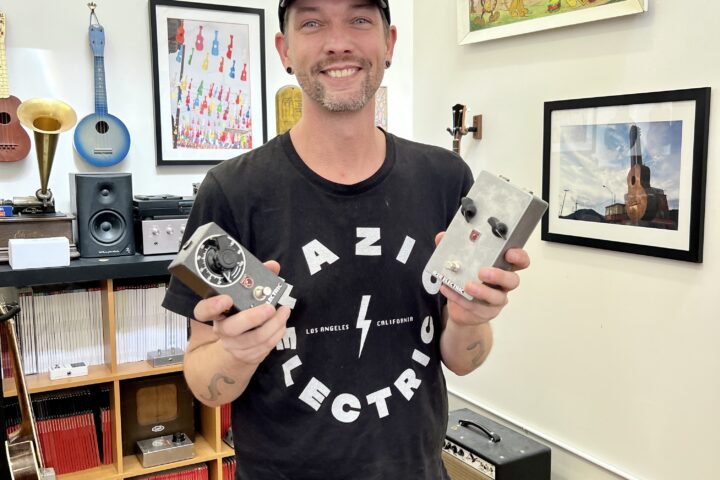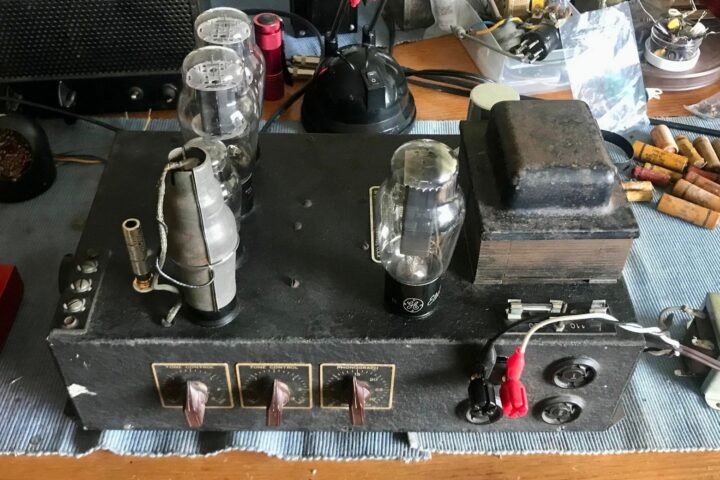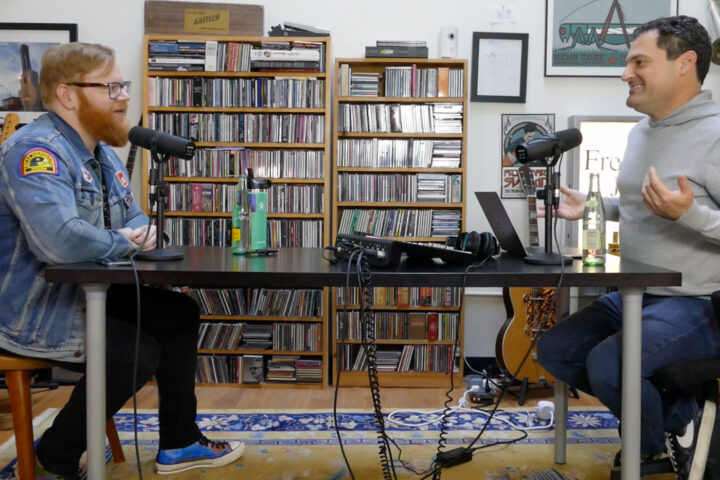Tim Schroeder is one of those guys who does everything, does it very well, and flies under the radar while doing it, even with his name literally in lights behind one of the few bona fide guitar heroes working in music today. You folks are probably familiar with Nels Cline, right? Nels graced the cover of issue 38 of the Fretboard Journal, and, more often than not, when you’ve seen or heard him he’s been playing through a Schroeder amplifier. In fact, Schroeder Amplification amps are all across Wilco’s backline–Tim’s worked closely with Jeff Tweedy and John Stirratt runs a Schroeder through his Ampeg cabinets.
Within certain circles, Tim’s SA-9 (formerly known as the DB-7) has become akin to the Holy Grail of amplifiers, and done so by being as steadfast and straightforward as the man behind them. Given that, and since Schroeder has already been lurking in two issues (don’t forget the cover story on the Wilco Loft in issue 15), we hit him up for a chat. As it happened, it was a conversation that covered a lot of ground, so we’re sharing excerpts here, as part of our Bench Press series. Look for more to come, soon.
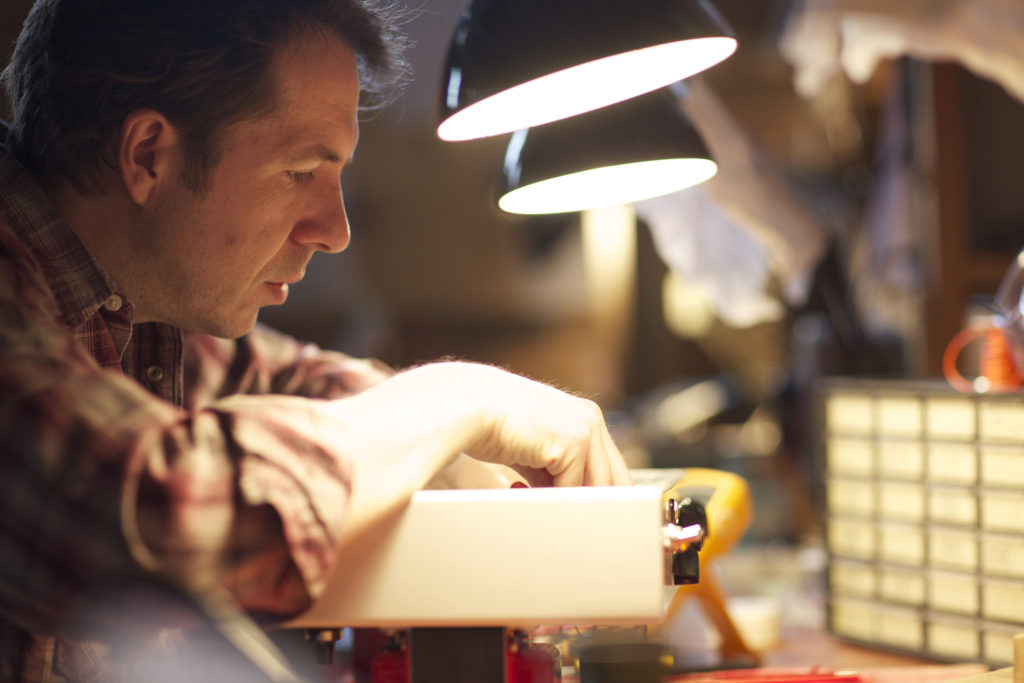
Fretboard Journal: How long have you been doing this? How’d you get started?
Tim Schroeder: I guess I got the bug probably when I was a teenager, maybe 13 to 14 years old or so. I just had a ravenous appetite for music and the technology that went into music as well, meaning playback, not necessarily the making of instruments at that point. I had reel-to-reel tape recorders at my disposal and all that kind of stuff. I really was fine-tuning how I was listenining, just trying different things, actually starting to experiment with sculpting sound at about 14, 15 years old.
At that point, I started playing guitar. The first thing that blew my mind was listening to my mom’s records. I heard Leo Kottke for the first time, and I was like, “Whoa. This is totally different than what you hear on the radio.” That really kind of just got me rolling on that, so I guess about the same time I started playing with instruments. I got a four-track recorder for Christmas, so I started getting into the actual creation of sounds and layers and all that kind of thing, the audiophile concepts, the recording engineers’ concepts and the players’ concepts.
I was just trying to really get everything I could out of everything I did, and I paid attention to which electrical outlet sounded best in the house, which was far away from air conditioners. All that has really carried through for the rest of my life. I went to Columbia [College] in Chicago for recording engineering. I have been a musician this whole time, 30-odd years. I’ve obviously studied musical instrument manufacturing, and building and repair. I don’t know if you’re aware that I built archtops for a number of years, exclusively.
FJ: I did not know that…
TS: Yeah. I started by going to The Apprentice Shop in Spring Hill, Tennessee. I guess that was 26, 27 or 28 years ago, or something like that. That was kind of a crash course in guitar repair. I did it as a summer course, kind of a month-long intensive crash course. I was exposed to a lot of different concepts, and they did a lot of warranty work for Gibson, so I was able to kind of see what worked and what didn’t work and what was problematic with Gibsons and all sorts of other things. After that, I kind of fell into an incredible opportunity working for Gary Brawer in San Francisco. That was really my first job, so I cut my teeth and did my apprenticeship while I was sitting next to and literally watching Jerry Garcia’s guitars being gutted and rebuilt or watching electronics being fabricated. Joe Satriani, Stephen Stills… the names go on and on and on and on. I was able to meet all those guys.
I was able to be behind the scenes, seeing how things were done on that level and seeing what went into all these guitars and [hear] the back story that people don’t normally know about. They know Joe Satriani played Ibanezes, but little did they know that we were actually the ones who took the raw components from Ibanez and then made very fine instruments out of them. It was that kind of stuff.
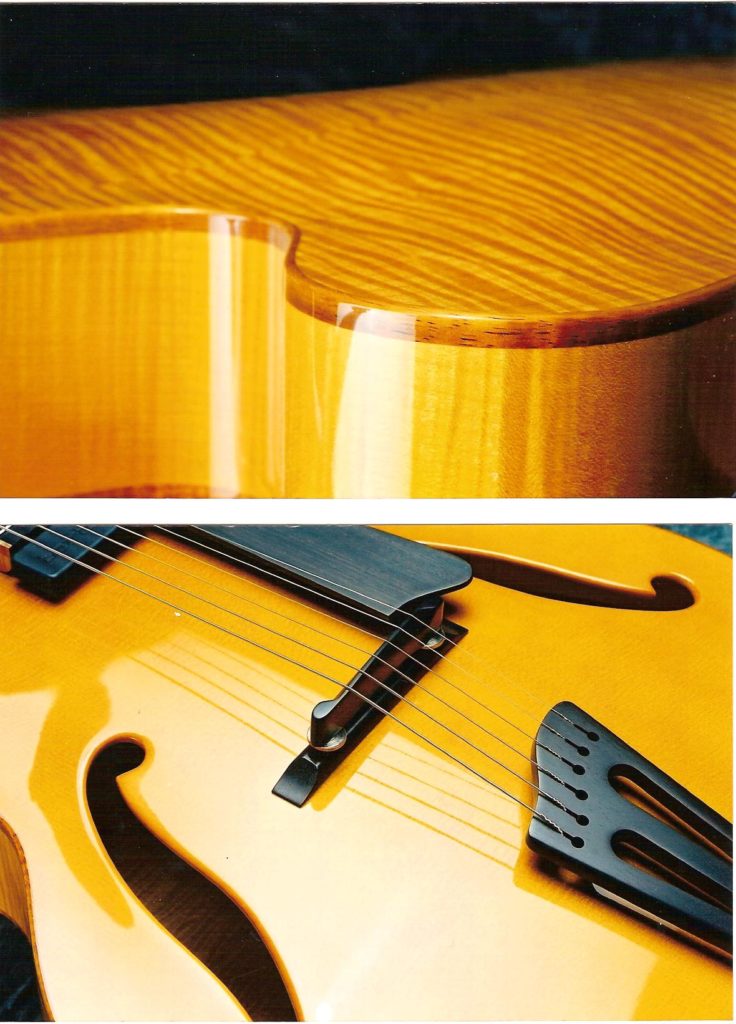
From there, I went and studied with Bob Benedetto for a time… Six-string instruments are still my passion, and I just wanted to actually get my head around what I see as the most difficult instrument to make. I studied with him for a time and went and opened up my own shop about 26 years ago, I guess. I built archtops exclusively for about six or seven years, made a couple of electrics at that time as well, but I was really focused on the acoustic archtops. This whole time in the background I was still working on electronics, and I was still fascinated by vibration and how it affects electronics. I made component racks for audiophiles and sold them through audiophile stores, kind of vibrational diode if you will. I think I was probably working 16-hour days for seven days a week. I probably made about 10 [guitars] a year, so I’d make these fine acoustic instruments, and then I was trying to find a neutral floating pickup, so I was kind of involved in the modification and design of that.
Then people would plug these fine acoustic instruments into guitar amps and everything would be notched and heavily, heavily, heavily colored. At that point, I decided to get serious about actually manufacturing amplifiers.
FJ: So, this amplifier company incarnation, when did it officially begin?
TS: I think it’s officially been Schroeder Amplification for about two years. Though, before that … I mean I was doing all of the exact same things. I just needed to change the name. It was Schroeder Guitar Repair and Custom Building for a very, very, very long time. So, that wasn’t necessarily applicable to what I was doing at the time, though I do still do high end repairs. I wanted something that was focused more on amplification. I would say the current lineup is probably about ten years old, in terms of the SA-9, which is what I’m known for. It used to be the DB-7. It’s kind of evolved. Actually, there was a copyright on the name DB, as it pertained to audio amplifiers, which kind of blew me away. Same amplifier. It’s grown by leaps and bounds. I have many different offerings now.
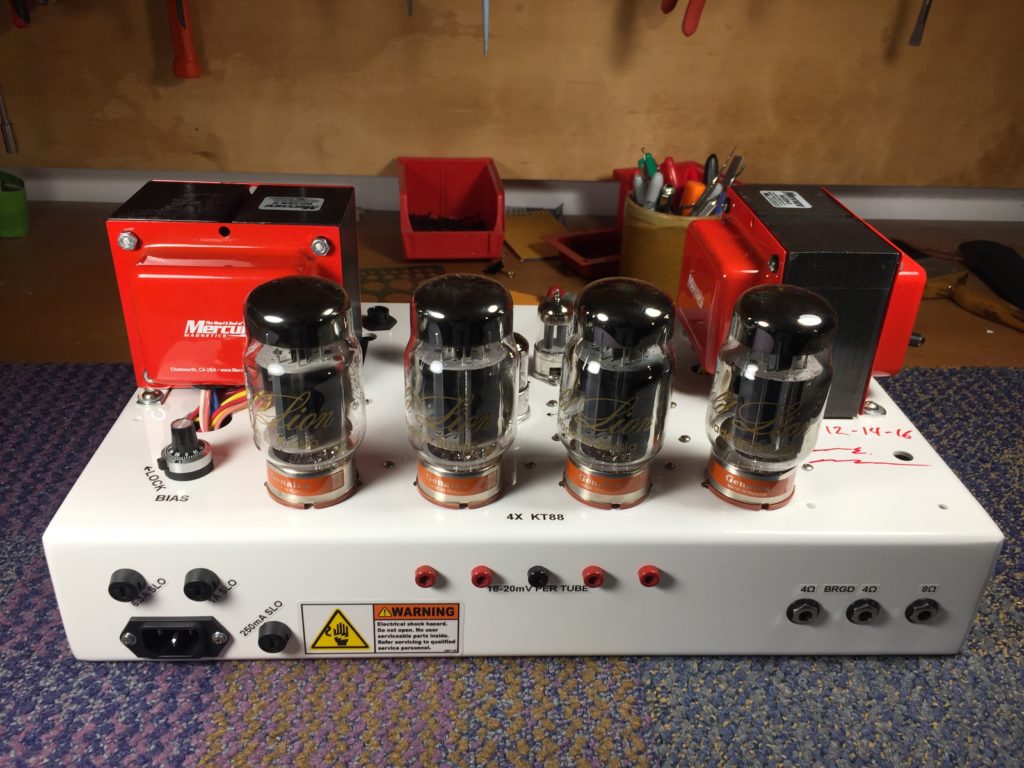
FJ: How many amplifiers do you build a year?
TS: Amplifiers, I probably build about maybe twenty a year. I also build effects. The Blister Agent, which has taken over my life. I was only supposed to make 25, as I have every six or seven or eight years, because it usually takes me about six years to remember how stupid of an idea it is. All of my products are built to the nth degree, meaning even the Blister Agent pedals, there’s no PCB. It’s all breadboard. Even 16-pin sockets are hand-wired. And there’s a lot going on in these pedals.
I originally was going to do a run of 25, because I had a list of people who wanted them, and they were people who really wanted to have them. At a weak moment when I had some chassis that were being manufactured, a good client called up and said, “Hey, are you making those again?” I said, “Fine.” And he sold six like, that day. So, while I was punching 25 boxes, I said, “Why don’t I make 50. What the heck? I’ll make another 25 in eight years or something.” I put out a small email saying, “Hey, I’m making these again…” Ten hours later I woke up in the morning to 60 deposits. I was like, “Ughhh.” So, now I have to make another batch of these, because I have deposits.
So, as with everything I do, even the Blister Agents have six nines wire. Six nines meaning 99.9999% purity. Every single component is absolutely the finest I can find. It’s trickle down technology from my amplifiers.
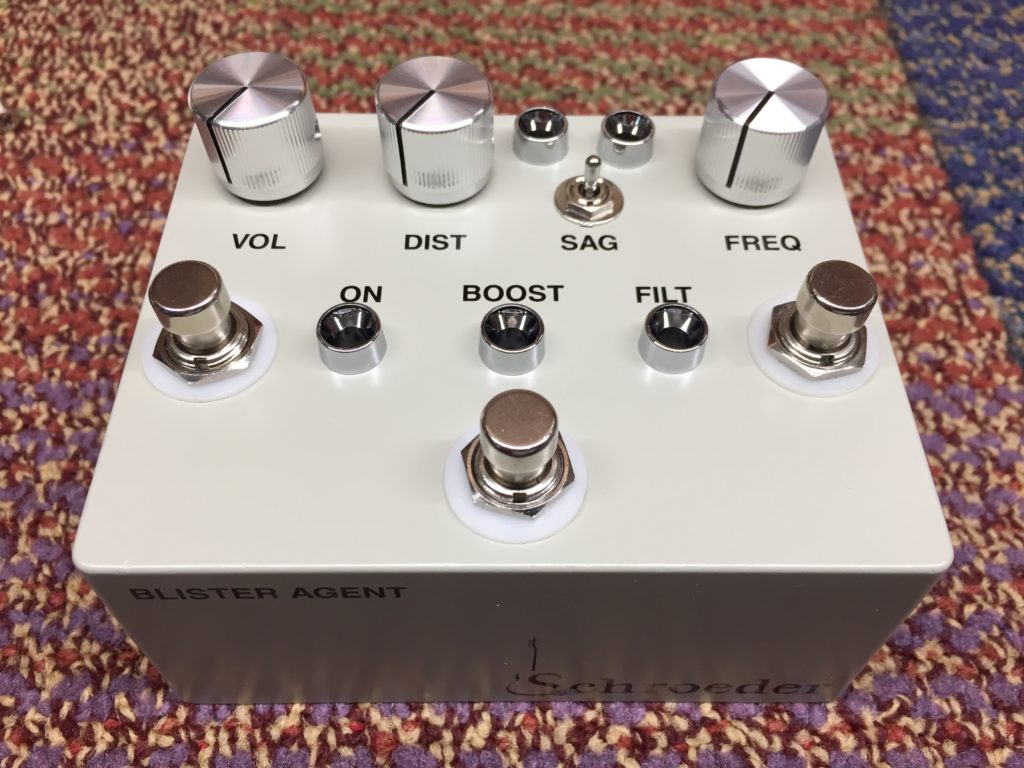
FJ: How is your time divided between pedals, amps and repairs?
TS: That’s an excellent question. I don’t know yet.
FJ: Are those the three?
TS: Yeah. Those are my three main breadwinners. For the most part, I’m working alone. I think the question is, how is my time divided between my wife, my two-year-old son, my effects….I have no idea. On a day-to-day basis it’s, “What’s the biggest emergency?” I would say amplifiers are my passion. Right now, I’m almost exclusively building pedals just because I told people six months ago that it would be two months [out], so I’m just trying to get these out the door.
I do have a reverb unit coming out. I made a prototype years ago, because I don’t particularly care for reverb on guitar. I set out to make a reverb unit that I actually liked, which I did… But, it still wasn’t really my bag, so I sold it to a studio here in Chicago, and they’ve been using it everyday for six years.
The past couple of years the tools that I have available to me has just grown exponentially as I have joined forces with companies like Audience and companies that do very, very high-end audiophile work. All of a sudden I find myself with access to all of these components that I’ve been looking for, for literally decades that just are not accessible on the web or any of that kind of stuff. It’s just proprietary stuff.
FJ: Can you tell us a little bit more about the reverb unit? If you had to put your finger on the primary difference between what you’re getting from that reverb and what most people are getting with the thing.
TS: It’s an external spring tube-powered spring reverb. So, what this has is it has several tanks. Well, by several I mean two. So, you switch different tanks. I’ve made very special amplifiers or transformers with Mercury Magnetics so that I can select different taps off of the transformers, so that I can drive different combinations of the tanks. Series, parallel. It has pretty good tone shaping. It has the ability to hit the springs harder to where you can actually get them to drive and distort, which is kind of that Peter Green kind of sound. You can get it really, really thin and planky sounding or you can get it like a really, really big, dark, lush room. And, everything in between. So, that’s what’s a little bit unique about it. Plus, it’s the trickle down components from my amplifiers, so the finest capacitors, the finest everything that’s actually proprietary at this point. The six nines copper wire special. Even special power cables. Just everything is about as fine as it can get.
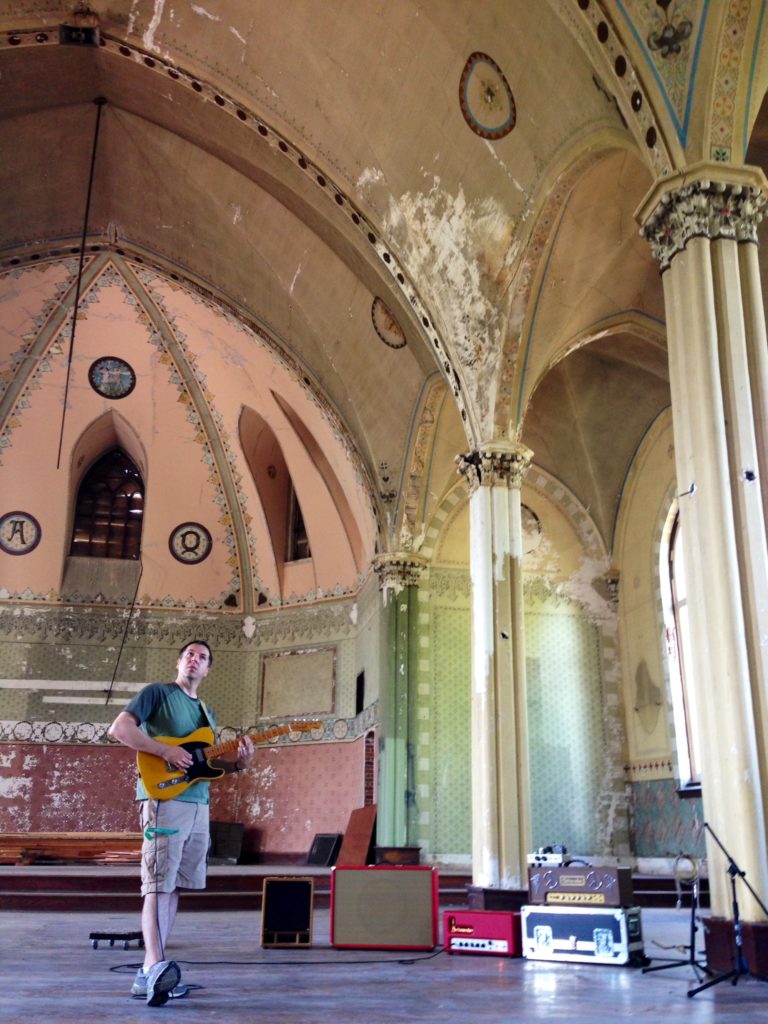
FJ: How big a unit is it?
TS: Well, the footprint is roughly like eight inches by say six inches by maybe ten inches high. I build things in batches just cause I’m a one man shop and it’s pretty easy for me to sell a batch, and then I can punch chassis at the same time and stuff, which is quite a bit easier for me. I’ve got a batch of ten of these going right now, and I think I have about seven sold already.
FJ: So the tanks are pretty small…
TS: They are. They’re small. The tanks themselves are about seven inches long or so, and they’re stacked.
FJ: Do you have like a guiding principle for what you want from an amplifier? What did you want your amplifier to sound like when you started this…
TS: I was kind of going for neutrality in tone, since I was trying to play my archtops through them. And, I’ve always been an electric guitar player, so that’s not to say I haven’t played with lots of effected amps and built distortion generators, that kind of thing. Every amp out there is very, very notched. The tone controls don’t necessarily make sense. It depends what models of course, and who the manufacturer was. The one thing it does not do is it doesn’t have the harmonic content and clarity. When I’m making a clean amplifier, which most of mine are. They sound good from “off.” Even my 200 watt Dozer model sounds good at extremely low levels, like bedroom-type levels. So many amplifiers have a sweet spot where they’re totally not linear at all. So, I wanted things that sounded good from “off” all the way to about before breakup, which is actually pretty darn loud in most of my circuits, even the smaller ones. It’s never shrill. It has bass response. It has clarity. It has harmonic content.
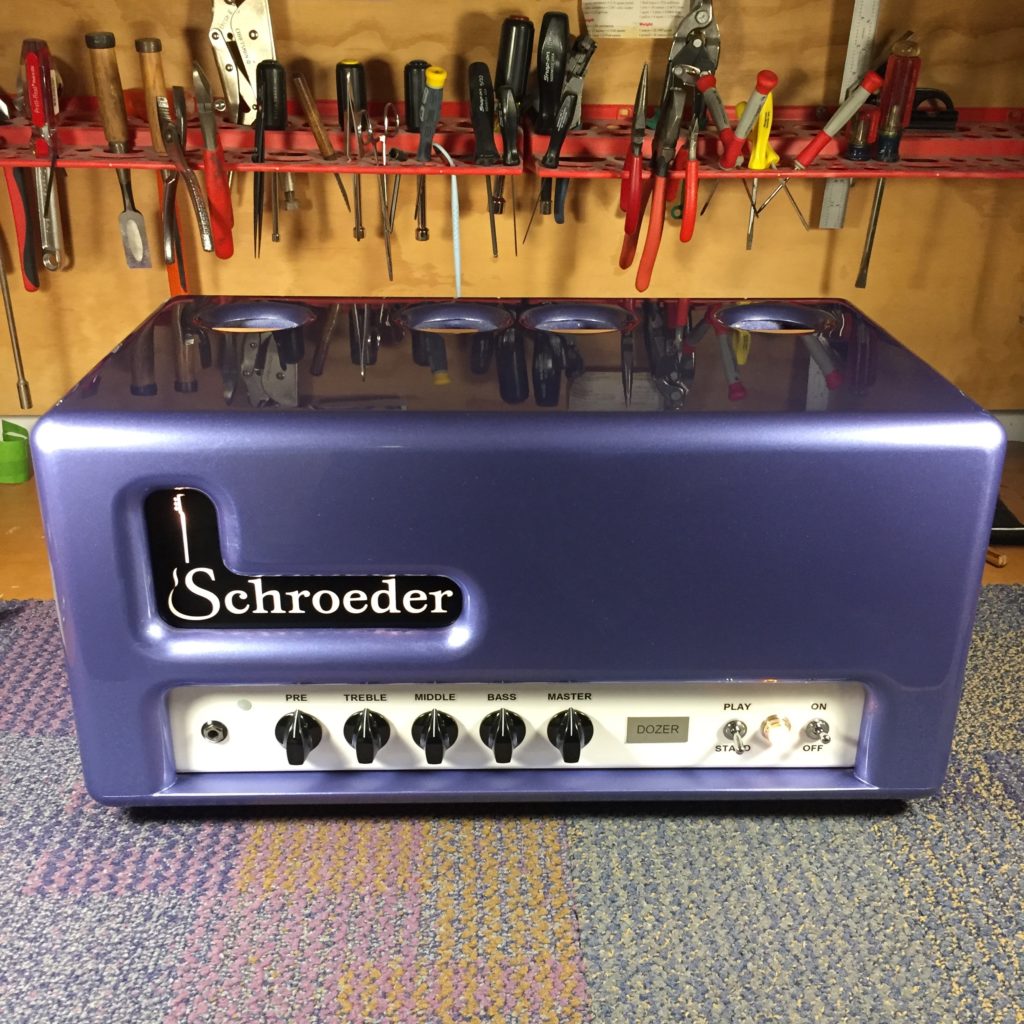
One of my first champions of my amplifiers was Nels Cline, of course. He plays with lots of effects. He likes my amps, because no matter what you put in the front, it does not load the amplifier. It just transmits what comes in the front end. My Dozer does that, as well. People will say, “It’s a 200 watt amplifier. I don’t play that loud.” Yeah, but if you’re driving a luxury car that has 500 horsepower you can still drive it in traffic, and if you need to pass somebody in an emergency situation you can get around ’em in a second.
That’s what it’s about. It’s about effortless reproduction of what you’re doing. I will also say that a lot of people, including Nels Cline, they’ve mentioned that their playing style has changed when they use my amplifiers simply because every clean note sustains as it should. As long as the string is going, the amplifier is going. And, they tend to leave a little more space. A lot of people who play with lots of effects will end up, as they own my amplifiers longer and longer, will use less and less effects, because they figure out that their right hand has so much in it. The subtleties are all there, which is what it’s all about for me, it’s being able to recreate that.
